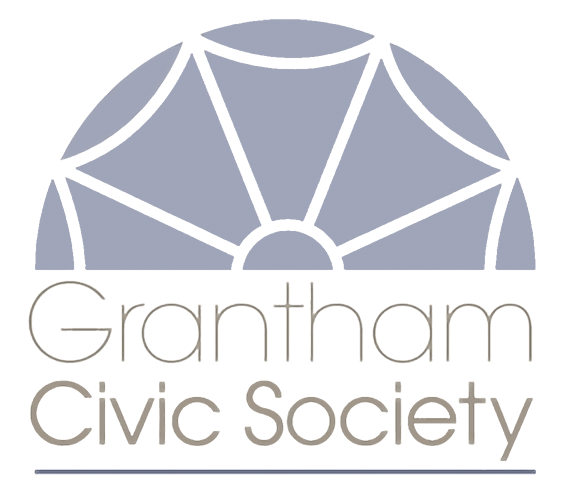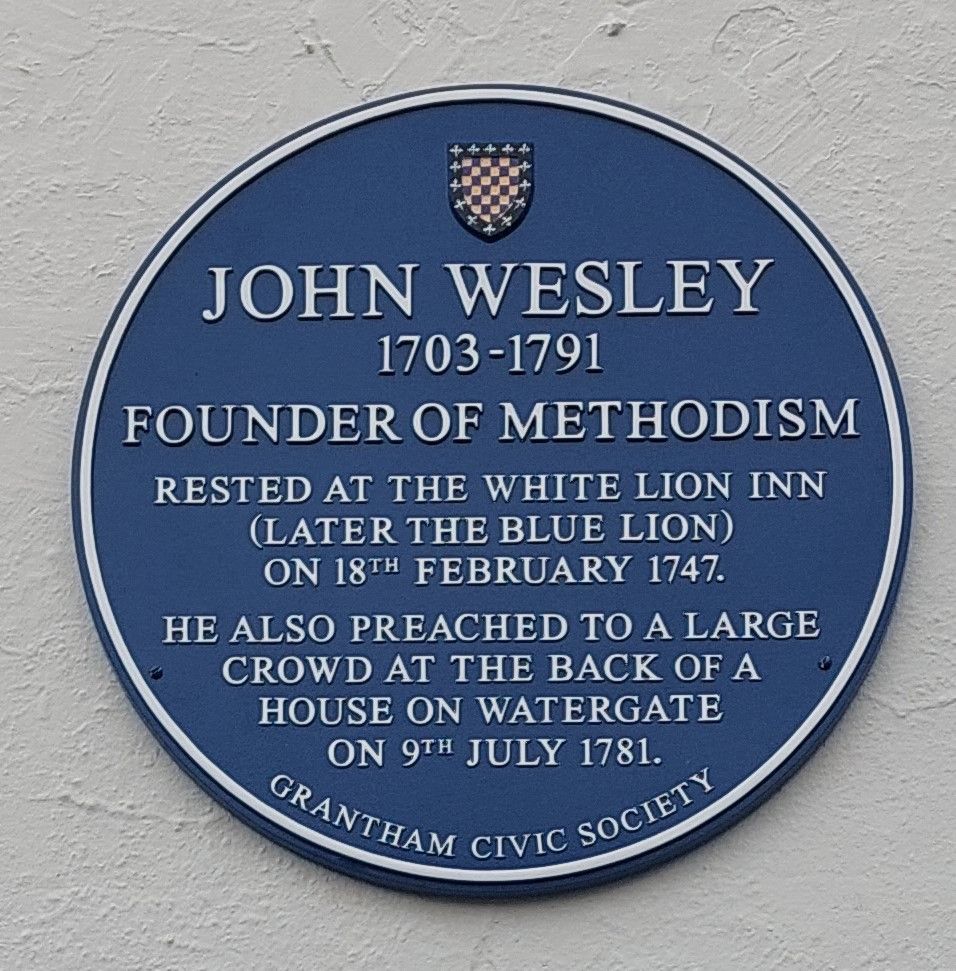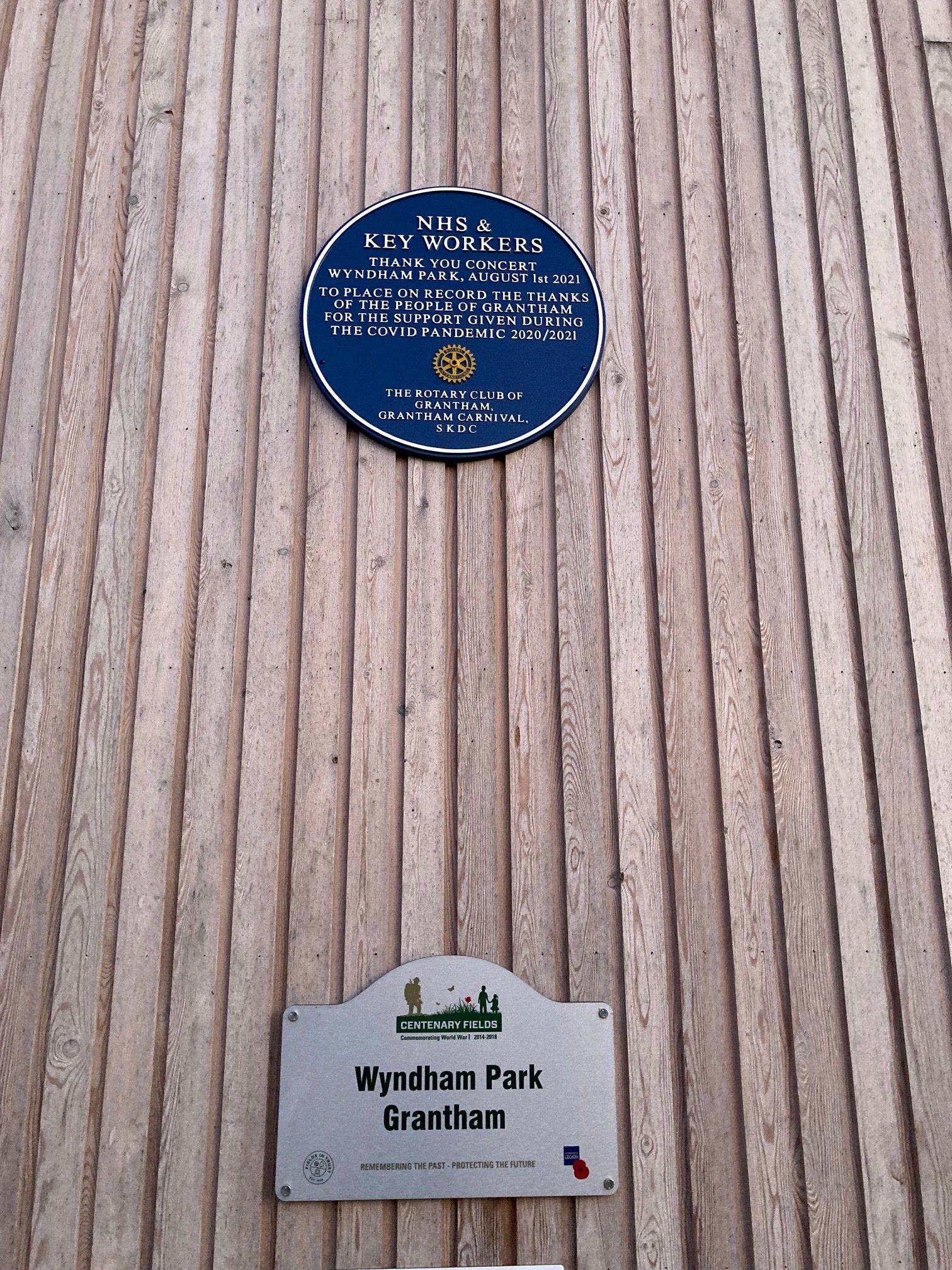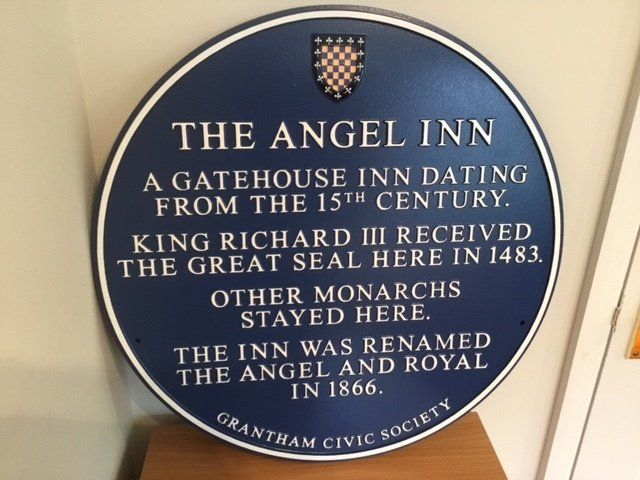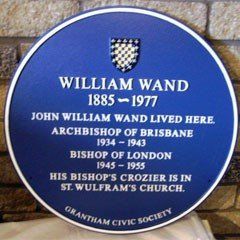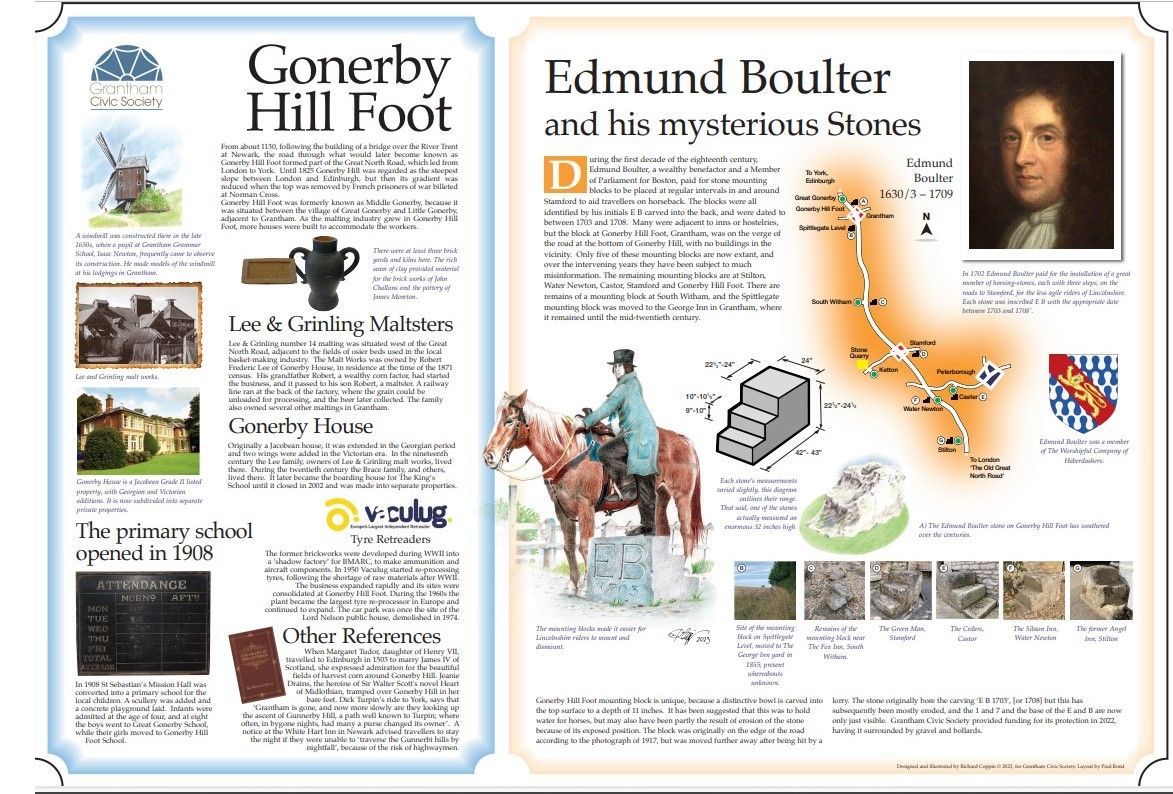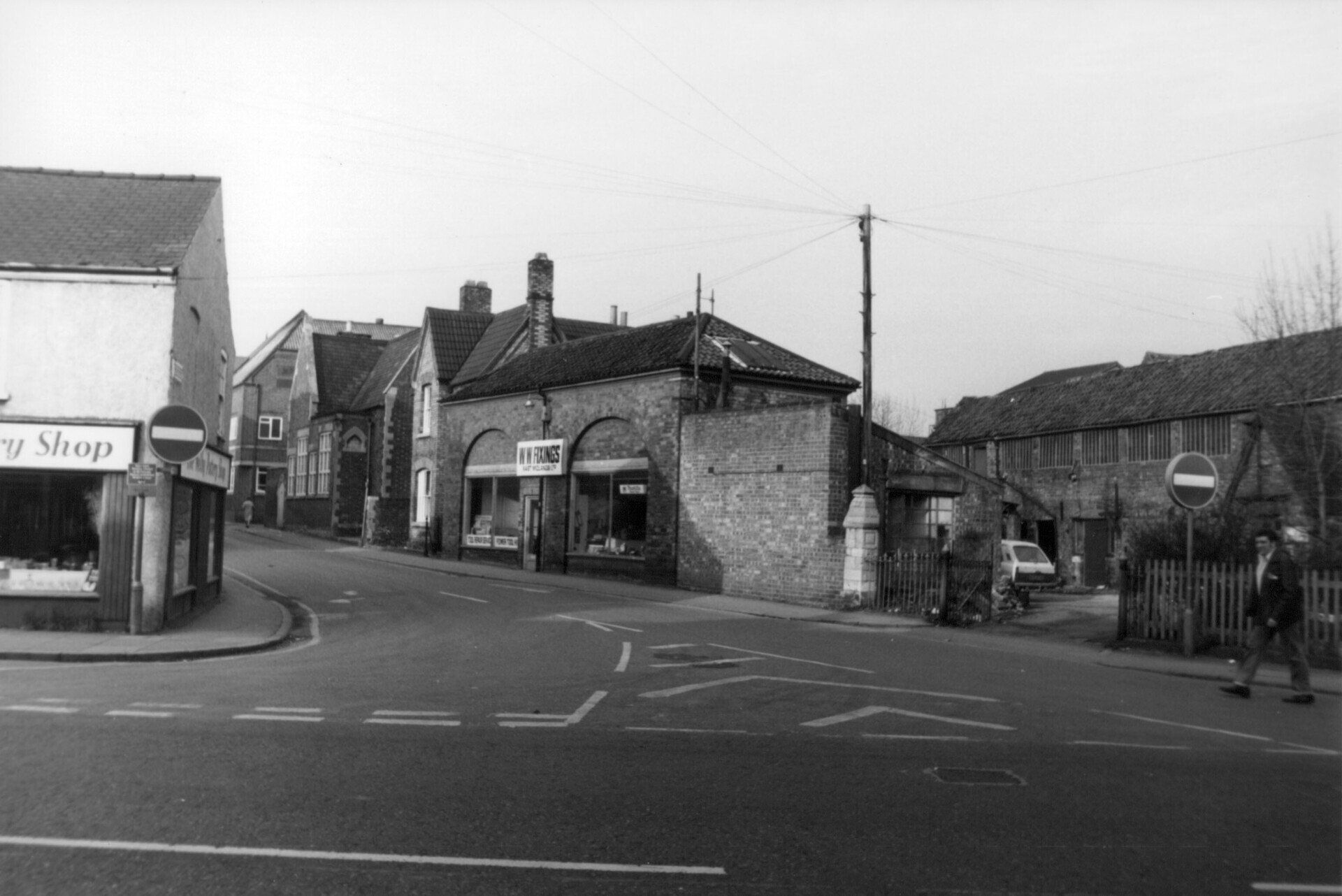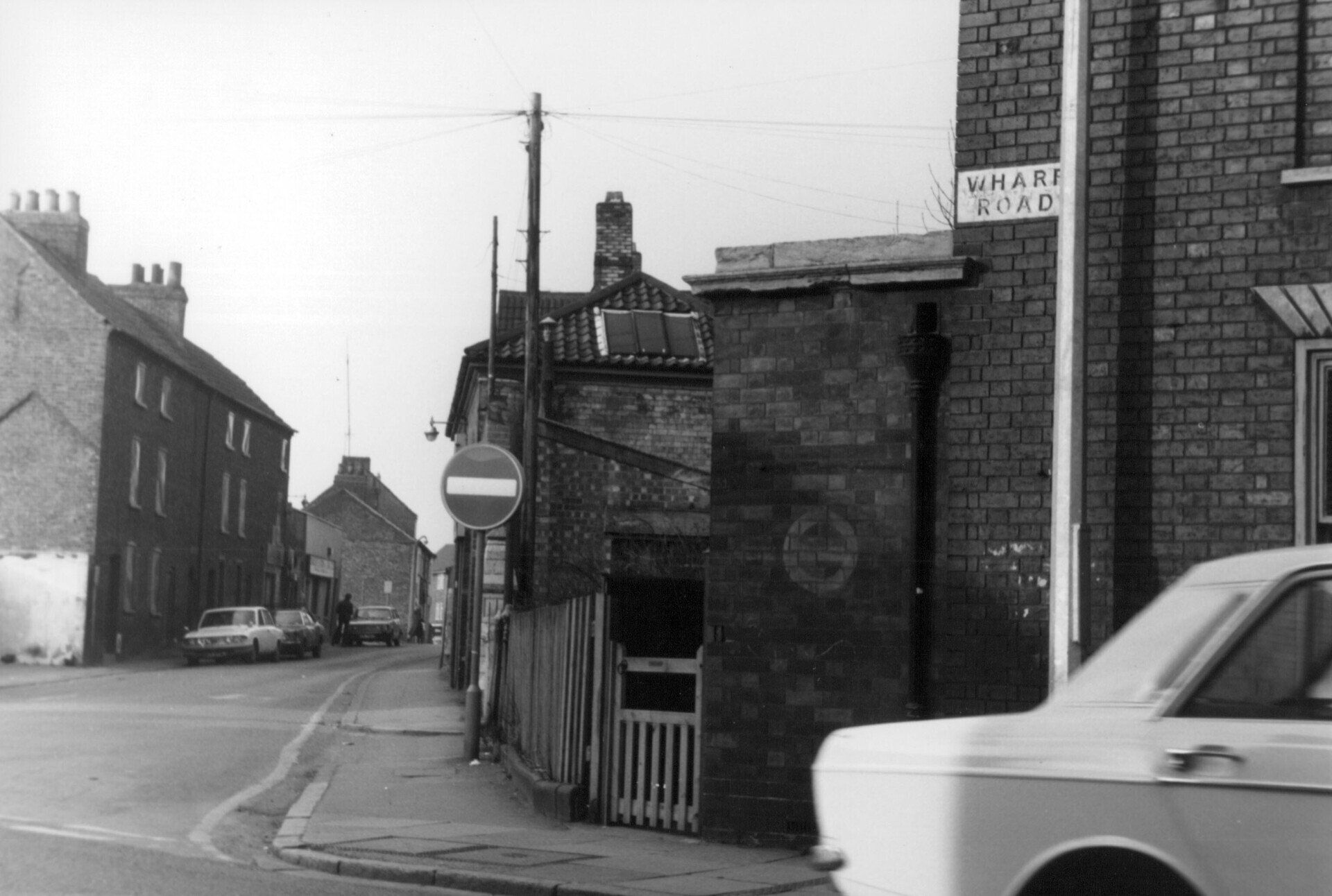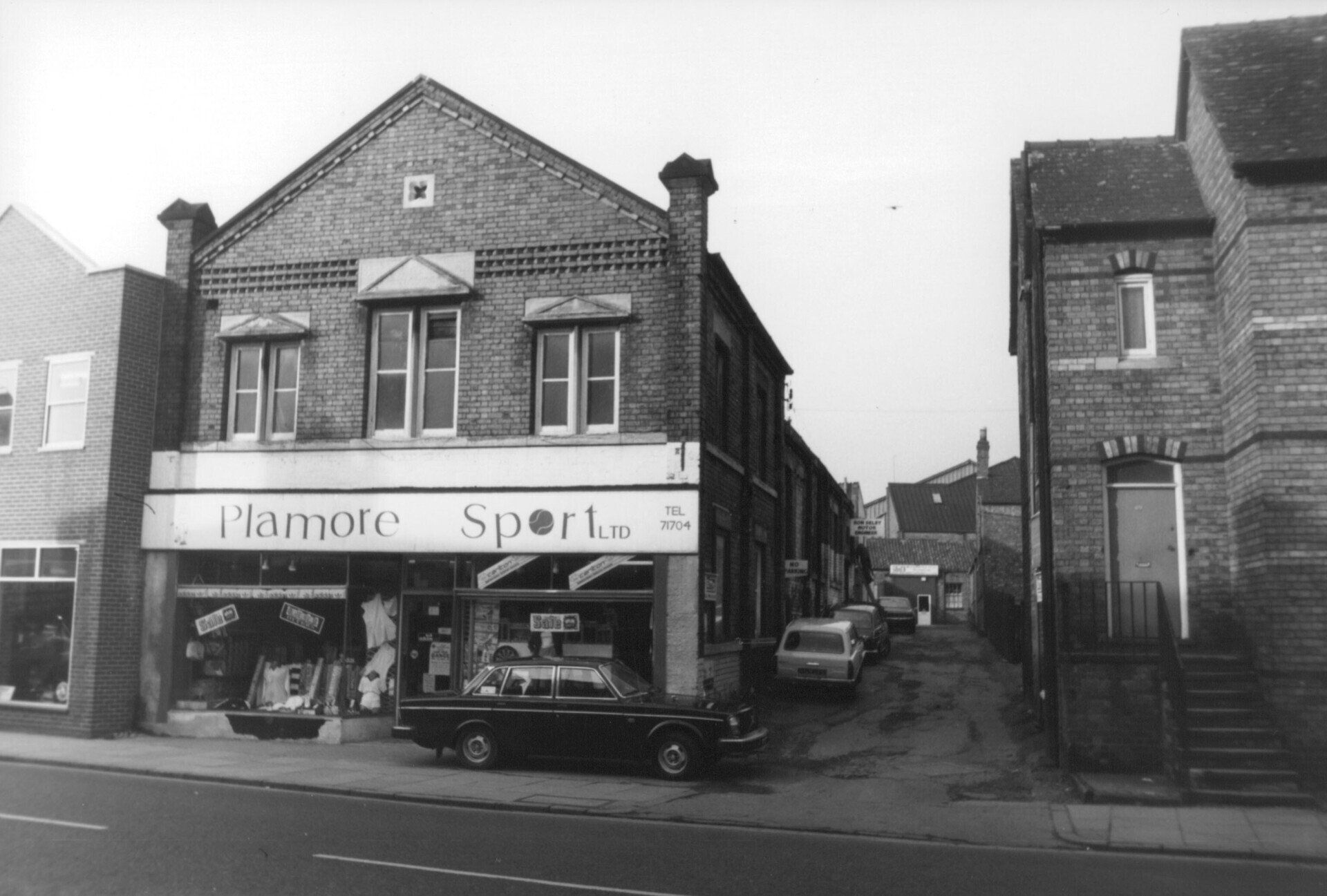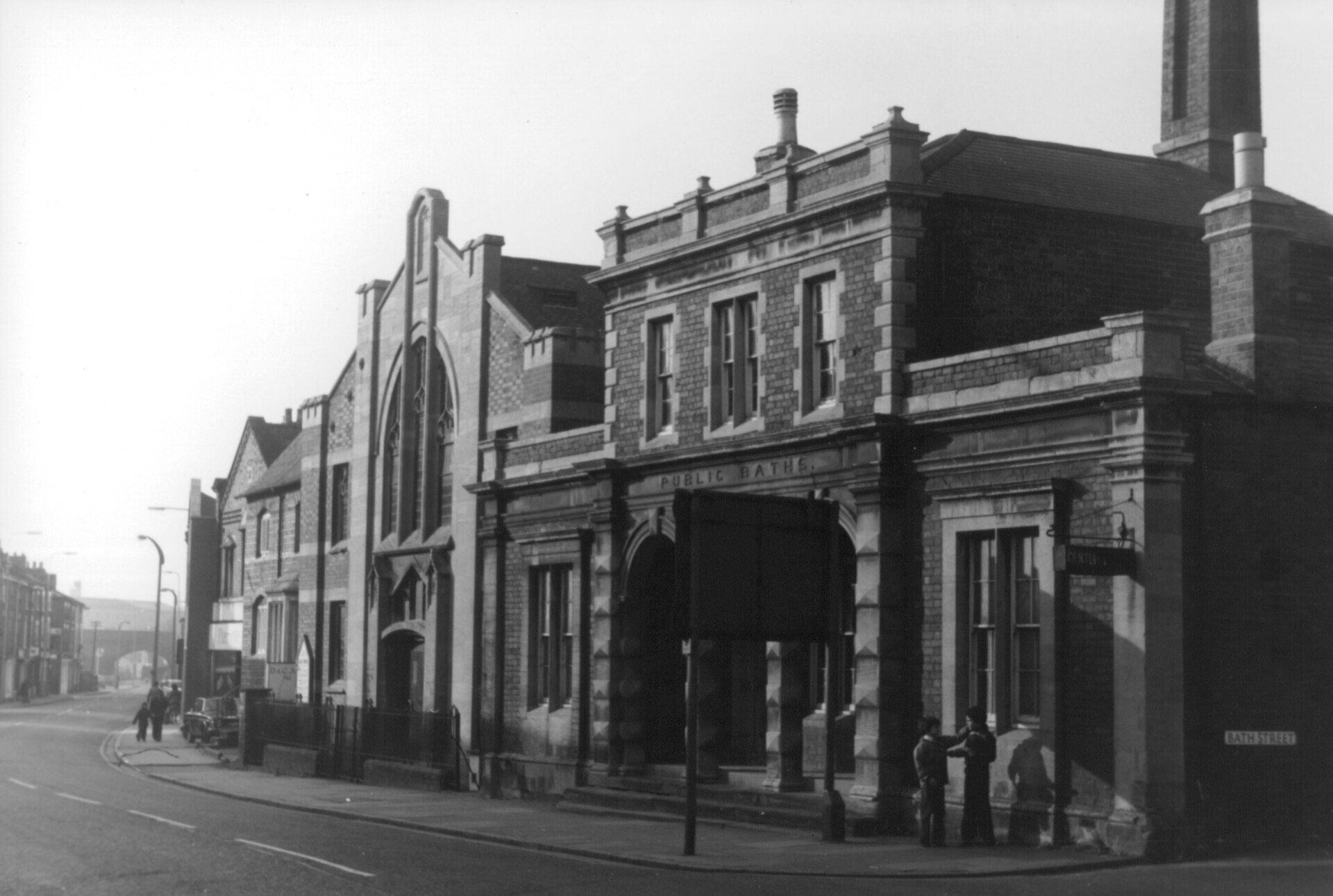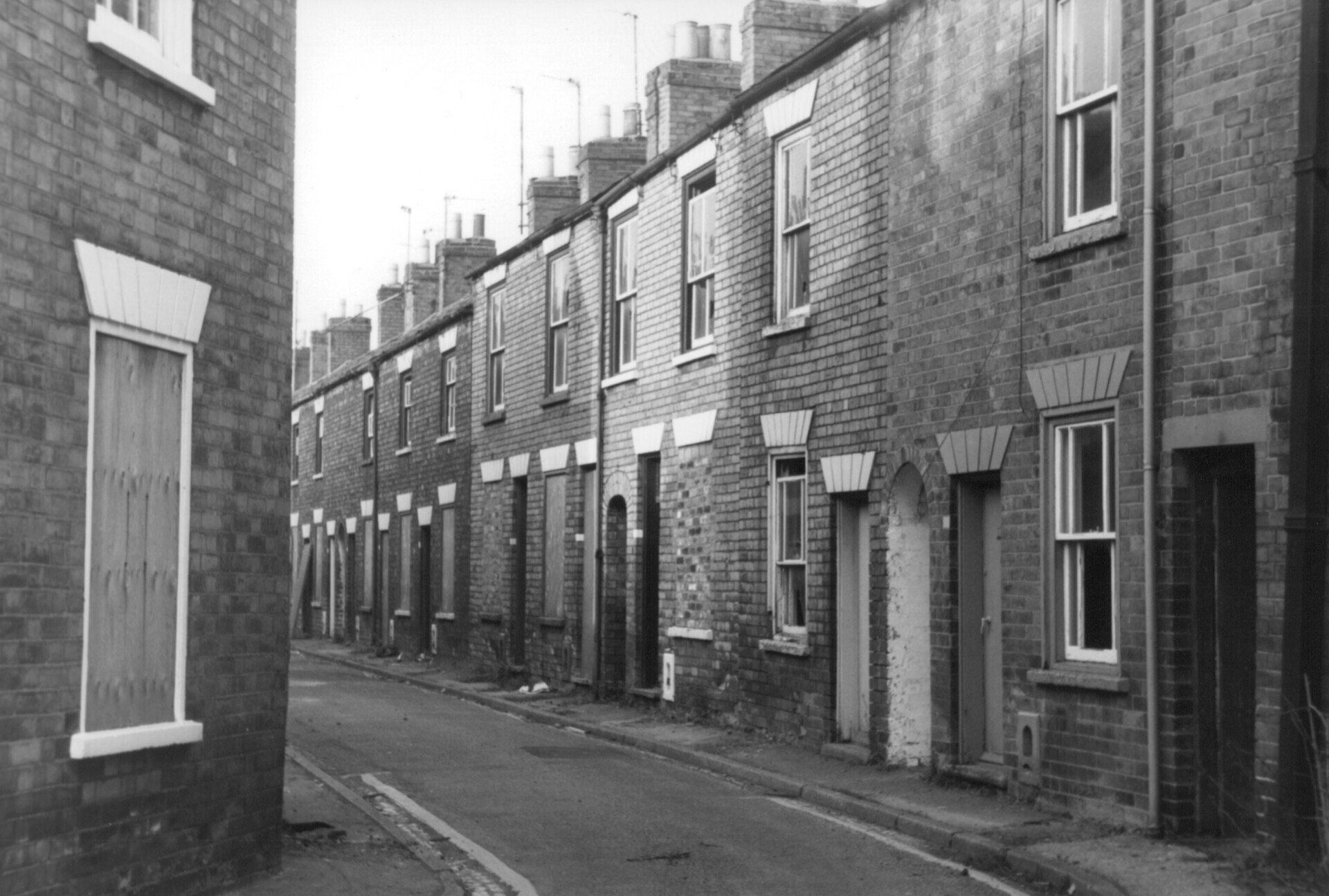GRANTHAM CIVIC SOCIETY
Grantham Blue Plaques & Signboards
Commemorative plaques can be found on buildings of all styles and dates all over the country. English Heritage looks after over 750 in London. Civic Societies in many towns and cities are responsible for others. Plaques connect the past and present in an immediate and tangible way. We think they can increase a sense of pride in a local community and educate about history and architecture, making both more accessible to people of all ages.
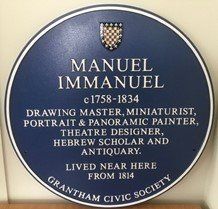
Manuel Immanuel was thought to have been born around 1758. He may have been the son of a painter and illustrator of manuscripts of the same name in London. He was an immensely talented artist, and also designed scenery and interior designs of theatres. He used transparencies and lamps to illustrate his work, often illustrating full size animals such as elephants. In 1805 The New Street Theatre on Red Lion Street in Boston was built to house Robertson’s Touring Company. When it was completed in January 1806, it could accommodate 1,079 people. It was reported that the interior decorations from ‘the Masterly pencil of Mr Immanuel, evince a taste and genius, which add to the reputation he already acquired as an artist’. Whilst in Boston he joined the local Lodge of Freemasons. In 1809, there were many celebrations to commemorate King George III, who had acceded to the throne nearly fifty years before. At St Ives in Cambridgeshire, Mr Immanuel, who was at that time living in Bedford, painted a large transparency and was given huge acclaim for his work. At was noted that he had recently produced a similar piece in Huntingdon.
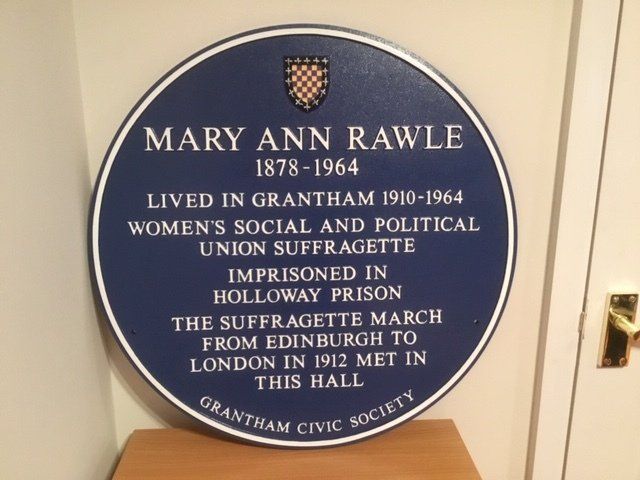
Mary Ann Rawle was born in Lancashire, where she was branch secretary of the Women’s Freedom League. She lived in Grantham 1910-1964. W.S.P.U. Suffragette imprisoned in Holloway Prison, friend of Mrs Pankhurst, who gave her a brooch to mark her time in prison. She was a friend of Keir Hardie the first Labour MP. Founder member of the Grantham branch of the National Union of Women’s Suffrage Societies, local branch secretary of the Woman’s Co-operative Guild and chairman of the Old Age Pensions Association. She stood as a Labour party candidate in the local and National elections.
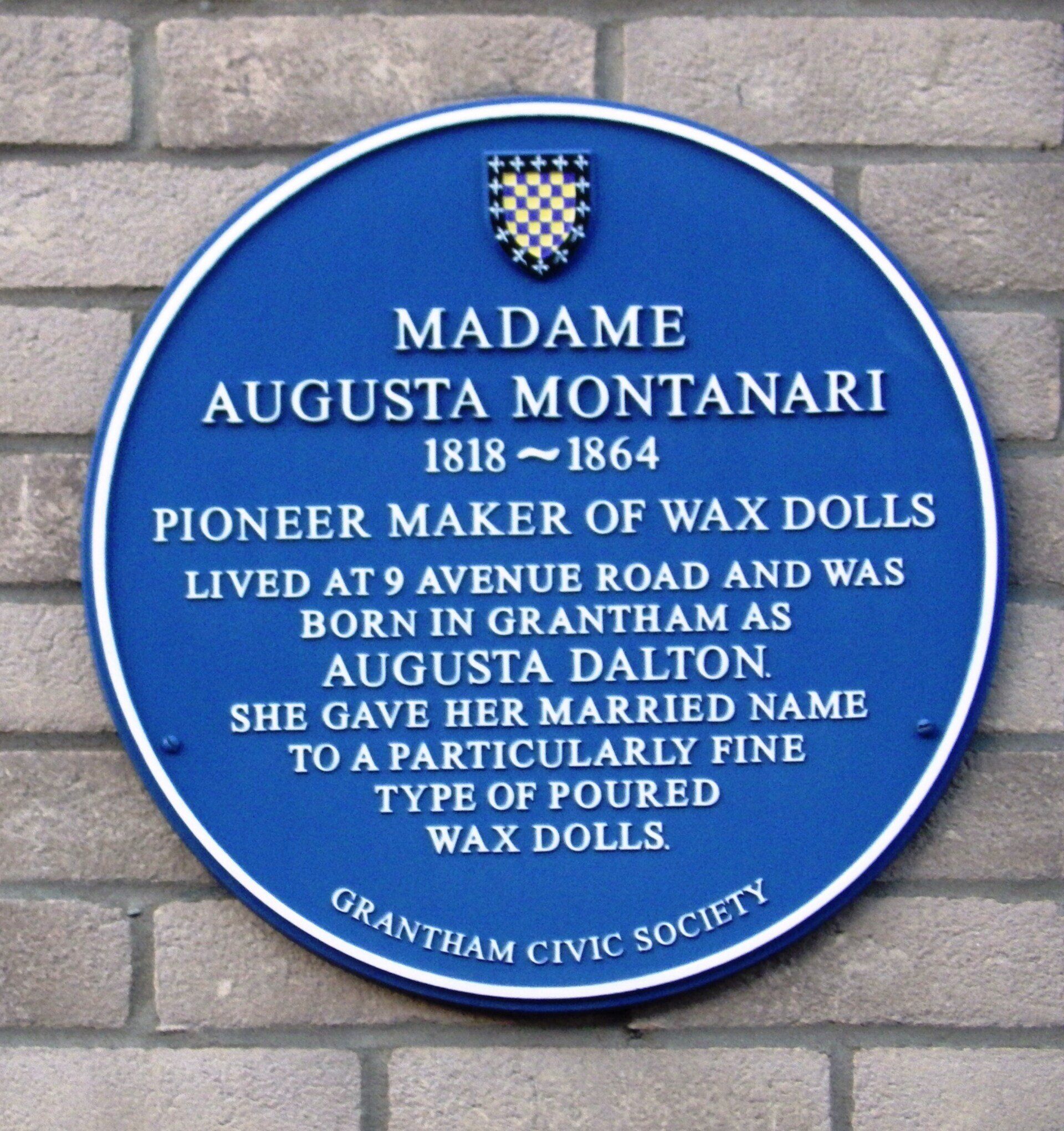
The Dalton’s were local publicans who kept the original Nag’s Head pub some way down London Road. Augusta grew up and moved to London where she met the exotically named Corsican gentleman Napoleon Montanari. They married and he, the sculptor, made the wax dolls and she made the costumes. They became much respected for their wax dolls winning a medal at the Great Exhibition in 1851 and even, it is said, supplying dolls for Queen Victoria’s children. Grantham Museum has a fine example of one of her dolls.
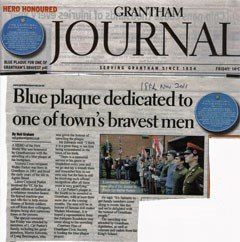
Walter Parker was born at 5 Agnes Street Grantham. He enlisted in the Royal Marines in September 1914 at Nottingham. On the night of 30th April 1915 at Gallipoli, Lance Corporal Parker as a volunteer stretcher bearer, went out with a party of NCO’s and men to the assistance of comrades in an isolated trench containing about 40 men some of whom were wounded. After crossing about 400 yards swept by rifle and machine gun fire, L/C Parker was alone, the rest of the party being killed or wounded. Despite being seriously wounded he gave assistance to the wounded and helped evacuate the casualties early next morning. During the three previous days L/C Parker had displayed consistent bravery and energy whilst in charge of the battalion stretcher bearers, almost always under fire over exposed ground. Recommendations for bravery were much delayed as his superiors were all wounded. He was invalided from service in June 1916 and his citation for the award of the Victoria Cross was not published until 22nd June 1917. The blue plaque in Agnes Street was unveiled by Walter Parker’s great grandson Martin Edwards of Long Benington in the presence of several members of the family. A Colour party from The King’s School and members of the TA from Prince William of Gloucester Barracks were also present. The day was significant -11th November 2011.
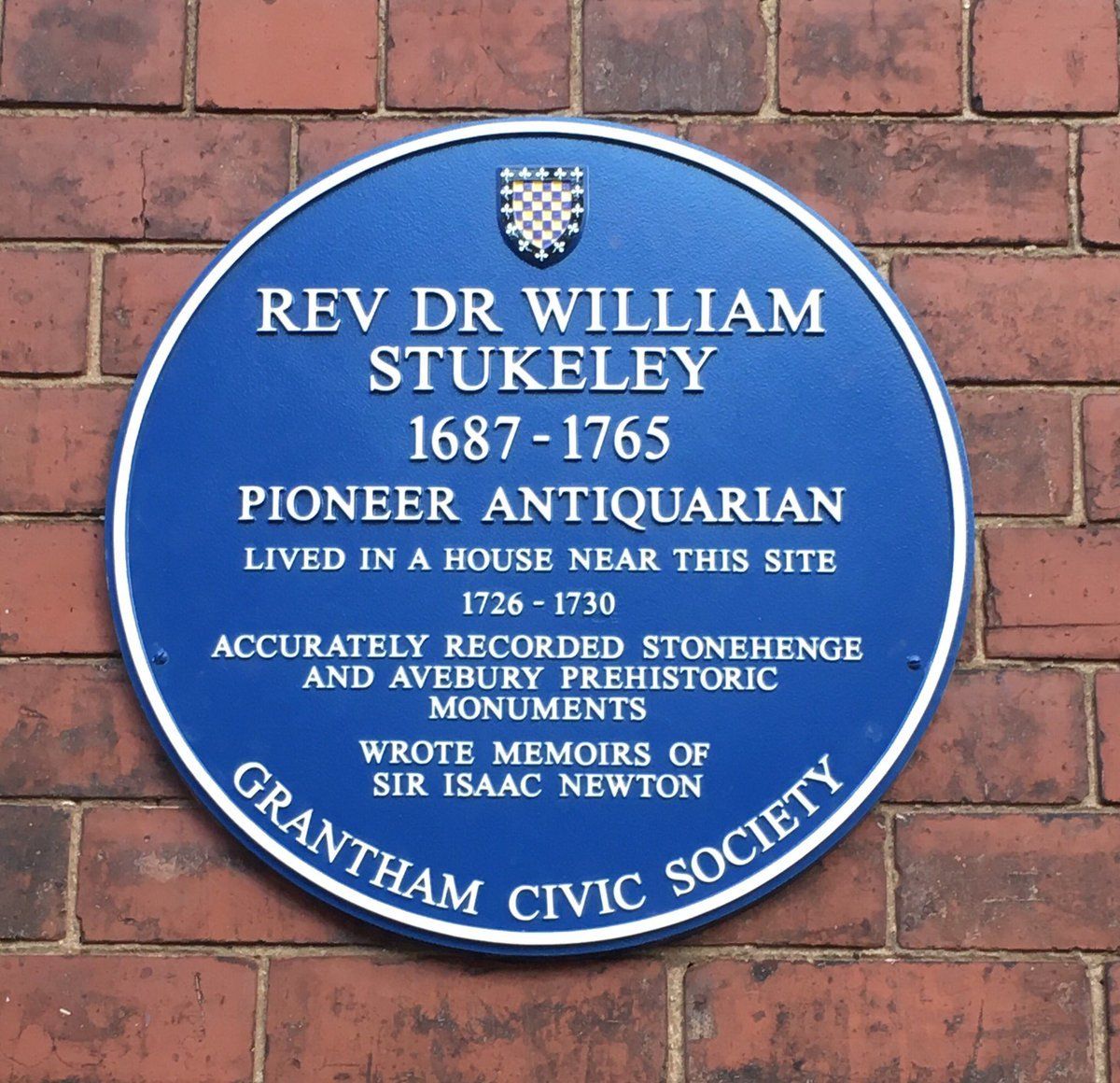
William Stukeley was born at Holbeach in Lincolnshire, and went on to study medicine at Cambridge University. He began making topographical and architectural drawings and published the results of his travels around Britain in 'Itinerarium Curiosum'. In 1718, he became the first secretary of the Society of Antiquaries of London. His excavations at Stonehenge and Avebury were published in two books in 1740 and 1743. He moved to Grantham in 1726 and said ‘I chose Grantham, because a very pleasant place, in a very fine country, near my estate and place of nativity in Holbeach. It was a quiet country life, spent in innocent pleasures and employment, with an especially agreeable garden, the sweetness of the air and the verdure and cheerfulness of rural scenes’. When he left the town in 1730, he wrote: ‘by removing from Grantham to Stamford, I lost the pleasure of a garden and pastures for horse keeping and by degrees found out the great want of literary conversation, without which study is but trifling’. He changed career and was ordained as vicar of All Saints Church in Stamford in Lincolnshire. Stukeley died in London on 3 March 1765.
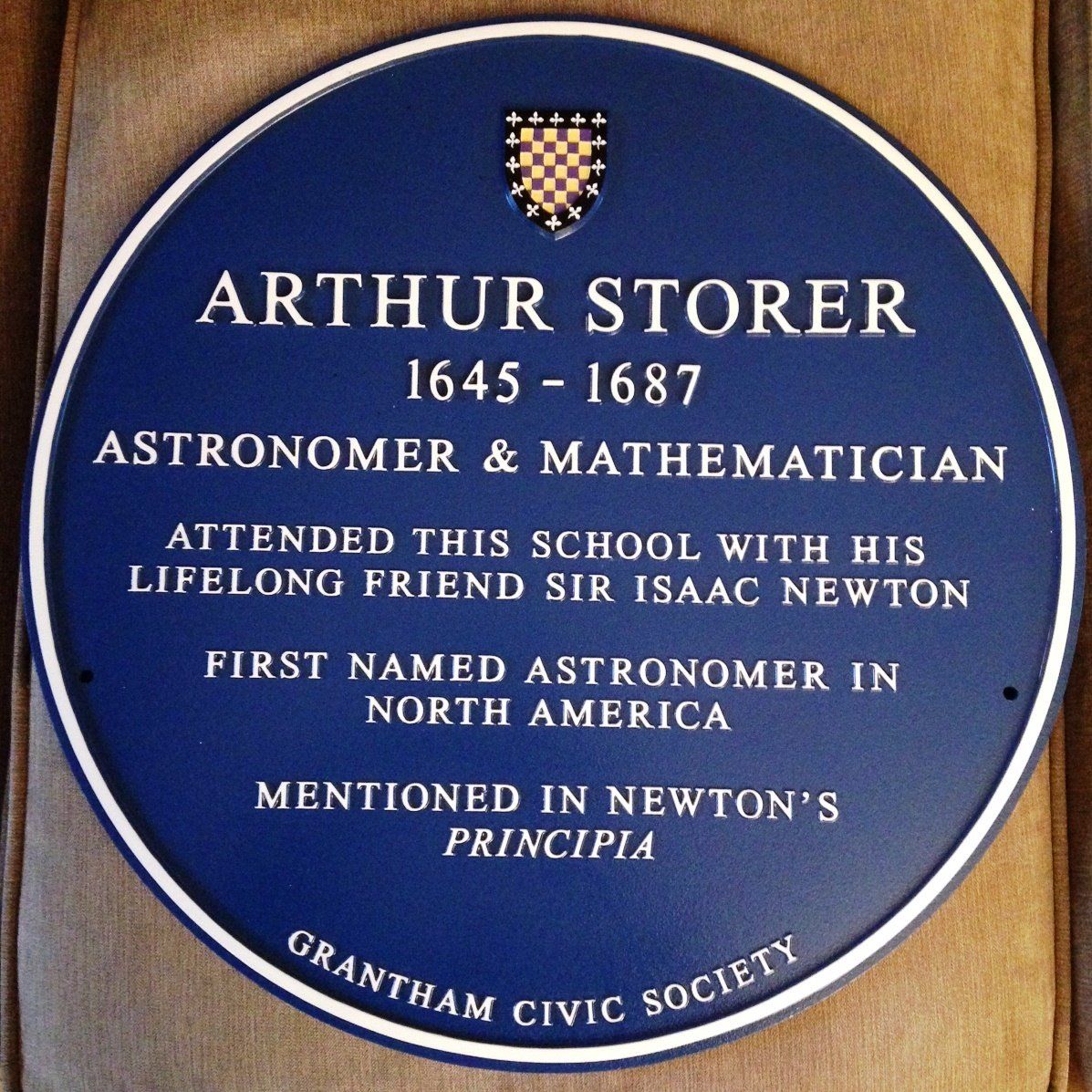
Arthur Storer 1645-1687, was the posthumous son of Edward Storer, a gentleman, and his wife Katherine, nee Babington, sister of Rev Humphrey Babington of Trinity College, Cambridge. He was born at Buckminster in Leicestershire and baptised there on 20 February 1645. In 1647 his widowed mother married a widower, William Clarke, an apothecary of Grantham in Lincolnshire, and their respective and joint children were brought up together. The boys attended the local grammar school, where their uncle Joseph Clarke, was the usher. From 1655 to 1661, Isaac Newton (born 25 December 1642), from the village of Colsterworth a few miles to the south, boarded at Clarkes’ house while he also attended the School. Arthur Storer was probably the boy with whom Newton fought in the churchyard next to the school. Newton took hold of his ears and rubbed his nose along the church wall. A few years later, when Newton listed his sins, he said that he regretted ‘beating Arthur Storer’. Newton and Storer later developed a lifelong friendship.
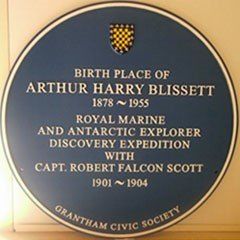
Civic Society member Jane Handsley had been researching her family and came across Jesse Handsley who was a Royal Marine with Capt Scott on the 1901-04 Expedition to the Antarctic when their Ship the Discovery became stuck in the ice. Jesse’s shipmate was another Royal Marine who, she found, was born at 48 Manthorpe Road Grantham. Old records revealed that No 48 had been renumbered as far back as 1900 as No 30. The 1886 Ordnance survey map pinpointed the house and it is still there. We tracked down the owner and he was delighted with the idea of a Blue plaque as his Father had been a whaler in the Southern Seas for many years. Jane set about the task herself of funding the £420 cost of the plaque with the help of a community fund via her then employer British Sugar Plc and the plaque is now a proud feature of No 30.

L/C Joseph Tombs also went to the Grammar school early in the 1900’s. He was born in Australia but his family moved to England when he was a boy. He joined the King’s Regiment (Liverpool) in 1912 and during the Battle of Festubert in May 1915 he was awarded the Victoria Cross. His unit had been mown down by enemy fire but on his own initiative Joseph Tombs went into No Man’s Land four times to rescue wounded comrades. He was wounded himself by shrapnel. He emigrated to Canada in 1921 and died in 1966.
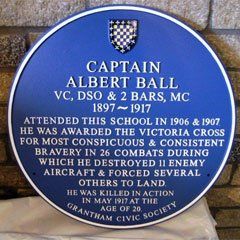
Captain Albert Ball attended the Grammar school (later renamed The King’s School) in 1906 and 1907. He was a WW1 fighter ace who had been awarded the MC and three DFC’s before finally winning the Victoria Cross. At the time of his death at the age of 20 he was the leading fighter pilot with 44 victories. He was pursued and may have been shot down by Baron Richthofen’s squadron and is buried in France near, where many years later, a school was named in his honour.
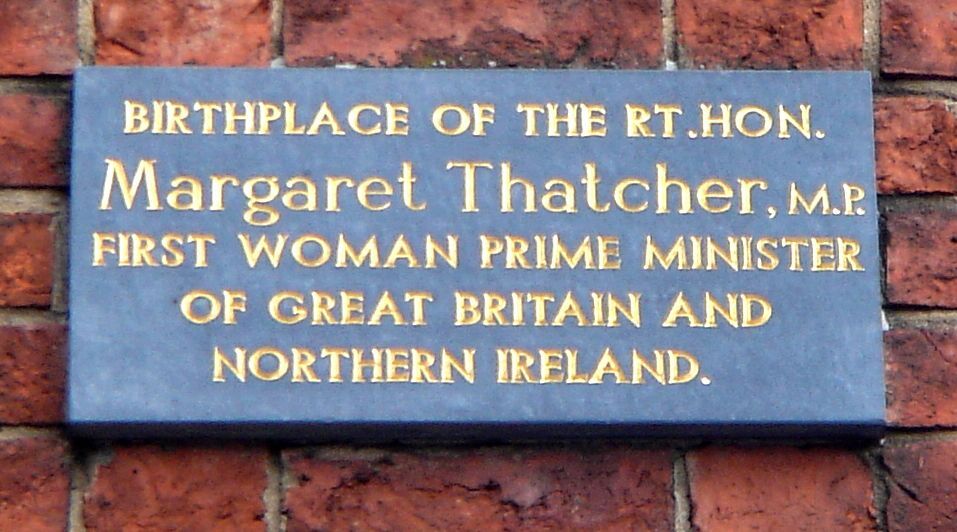
Margaret Thatcher was Britain's first female Prime Minister and the longest serving PM for over 150 years. She was born on 13 October 1925 in Grantham into a shop-keeping family and attended Huntingtower Primary school followed by Kesteven and Grantham Girls school. She was joint head girl before going to Oxford to study Chemistry. Her father Alfred Roberts was a local councillor, and then Alderman and Mayor of the town and with others founded the Rotary Club of Grantham becoming President in 1936-37. There is a Margaret Thatcher exhibition in Grantham Museum. Lady Thatcher was very proud of her time at KGGS and gave the school much credit for the education she received there.
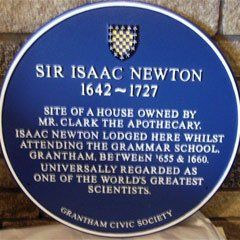
The plaque was dedicated by Canon Christopher Andrews, Rector of St Wulfram’s and unveiled by Sir Martin Rees, Master of Trinity College, Cambridge and Astronomer Royal, as part of the Gravity Fields Festival in September 2012. Isaac Newton has a second Blue plaque in the town and surely richly deserved. On 17 July 2013 Scott Mandlebrote, Fellow of Peterhouse College, Cambridge gave the annual Newton lecture at The King’s School. He is also Director of Studies of the Newton Project at the University of Sussex with Prof Rob Iliffe. He was delighted to unveil our Blue plaque on the wall of the Old School in Church Street. Canon Christopher Andrews was present to give a blessing.
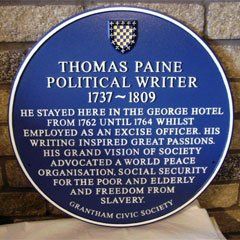
Born in Thetford the son of a corset maker and apprenticed to him, Thomas was not a great scholar at school and went to sea at 19. He eventually became a tax collector or excise man for George III’s government and worked in Grantham for two years. His career took him to America where he became a journalist. He published “Common Sense” in 1776 – a strong defence of American independence from England. After adventures in France, being imprisoned for not endorsing the execution of Louis XVI, he returned to America having written ”The Rights of Man” and later “The Age of Reason”. His writings inspired great passion and also brought him much criticism but he created prose with ideas that stirred the hearts of the fledgling United States. He was derided by the public and abandoned by his friends but has now become honoured and regarded as one of the Founding fathers of the United States. His story is taught to every child in the US. The Grantham plaque in the George Centre records Tom Paine staying at the George Hotel but in fact it was the George Inn which was on the site in 1762. The plaque was the gift of the Rotary Club of Grantham and was unveiled on 17th August 2011 by Ray Burman, the President of Rotary in Britain & Ireland (to acknowledge Rotary’s US founder) and Karen Huntress, the assistant cultural attaché representing the US ambassador to the UK. The American University of Evansville at Harlaxton was represented by the Principal Gordon Kingsley.
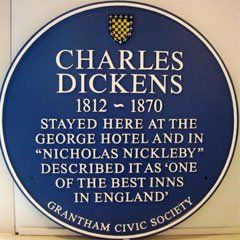
Charles Dickens came to Grantham on the Glasgow Mail coach en route to Yorkshire to research unsavoury schools which were cheating parents. He He stayed at the George Hotel and and the hotel subsequently figured in his novel “Nicholas Nickelby” when Nicholas passed the same way with Mr Wackford Squeers, the evil proprietor of Dotheboys Hall. and The George Hotel passed into literary history being described as “one of the best inns in England”. This plaque was the gift of Grantham’s greatest historian and former President of Grantham Civic Society Malcom Knapp.
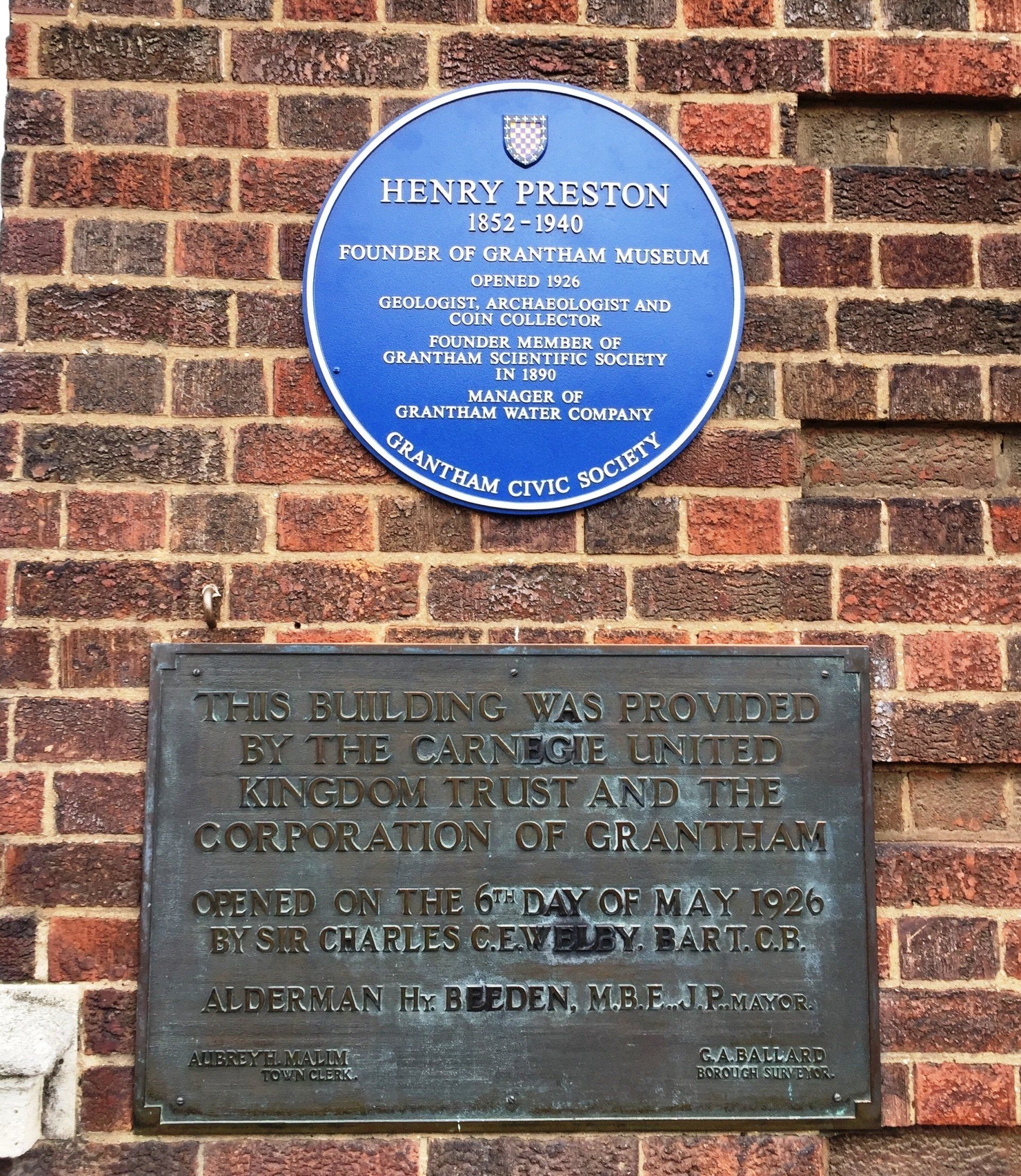
Helped to found Grantham Museum and Public Library in 1926 and was a distinguished archaeologist. He was the manager of the waterworks and helped to investigate Roman Saltersford and the much earlier fossil remains there, including the dinosaur once resident at Grantham Museum. The town owes much to Henry Preston’s work to inspire the creation of a Library and Museum in the town and the fine scholarship of his archaeological work.

Eleanor of Castile was the wife of King Edward 1 of England. They were married for 36 years when Eleanor died at Harby in Nottinghamshire on 28 November 1290. The funeral procession journeyed to London. King Edward decided that the resting place of the cortege each night should be marked by the erection of a memorial cross. The longest stage of the journey was the 23 miles to Grantham stopping on the night of 4 December. Our Grantham cross is one of three where there are no records of the construction, design and payments. It was constructed in the vicinity of St Peter’s Hill, where it survived for 351 years until it was pulled down by Cromwellian soldiers. Only three crosses remain with the most magnificent original being at Geddington near Kettering and Corby on the A43.
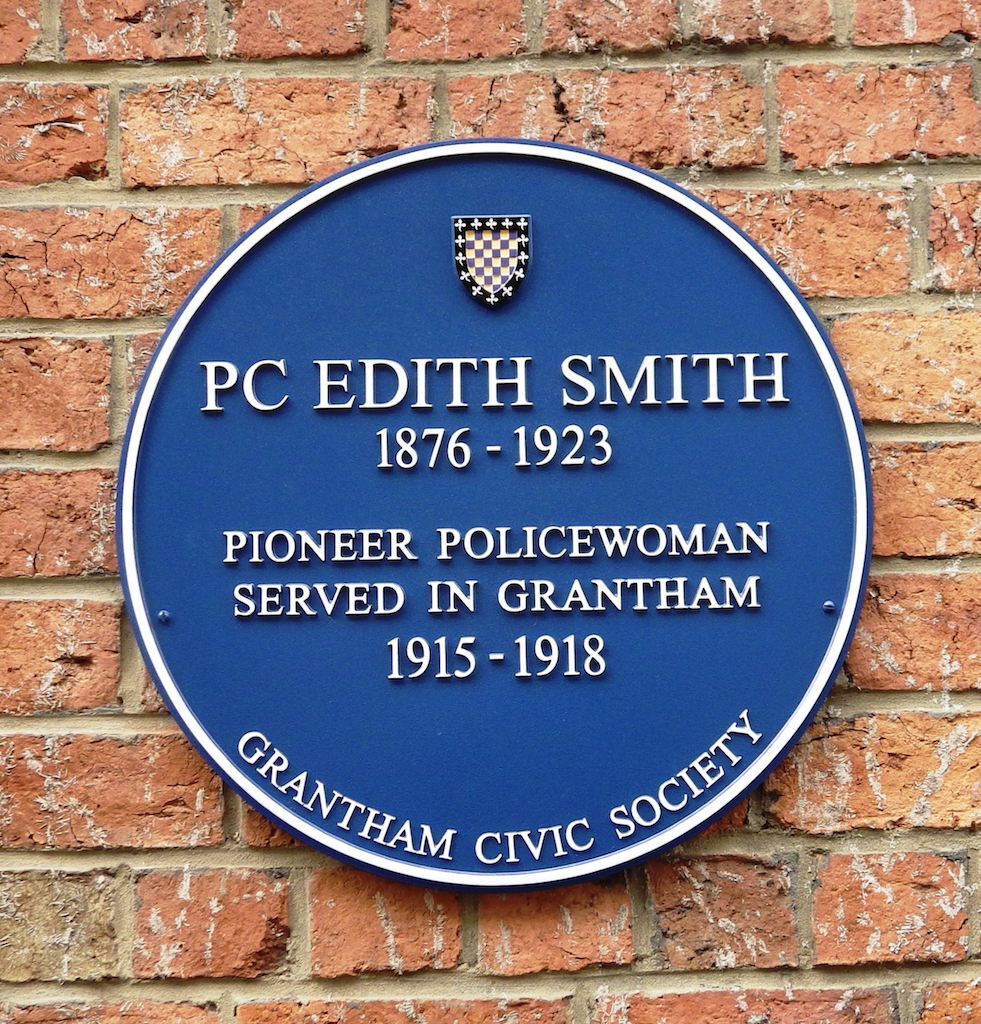
Edith Smith was born near Birkenhead in 1876. She married William Smith and so kept her family name. William died in 1907 leaving Edith with the care of their three daughters and one son James. Her life turned upside down and the 1911 census shows her training as a pupil midwife in London. Her daughters were living with relatives but her son was in an orphanage near Blackburn. The outbreak of war in 1914 gave women the opportunity to become involved in policing. Mrs Smith had been trained in London and was described by a colleague as ‘a woman of outstanding personality, fearless, motherly and adaptable’. On 17 December 1915 Chief Constable Casburn signed Edith Smith’s warrant card and she received the power of arrest, becoming the first full WPC receiving 28s (£1.40) per week. In June 1916 Edith was working alone in the town. She did rescue work among women and girls, saving many cases from coming to court. Indeed, although she handled hundreds of cases there is no record of her ever having to arrest anyone. However, she took no holidays, had no days off and worked nights with no overtime. By the end of 1917 Edith was tired out and she resigned in January 1918.
Grantham Signboards
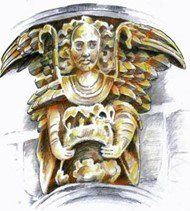
The first signboard was erected looking towards the Market Place near to the Old Conduit. The board took the site of an old red telephone box which was not much used. The job was done at the time Lincolnshire County Council was reconstructing the pathway close the Old Conduit and so LCC kindly installed the signboard for us led by Mark Heaton. This detail shows the Angel carving on the Angel & Royal hotel and the first draft of the Conduit drawing. Unfortunately, Richard depicted Franciscan monks, the Grey Friars, drawing water from the Conduit. Malcom Knapp protested “But the Reformation had arrived and their Friary had been demolished and the stone used to build the Conduit – you can’t show the Grey Friars!” Richard redid the drawing showing a shepherd but had trouble doing sheep’s feet so he hid them behind the barrels!
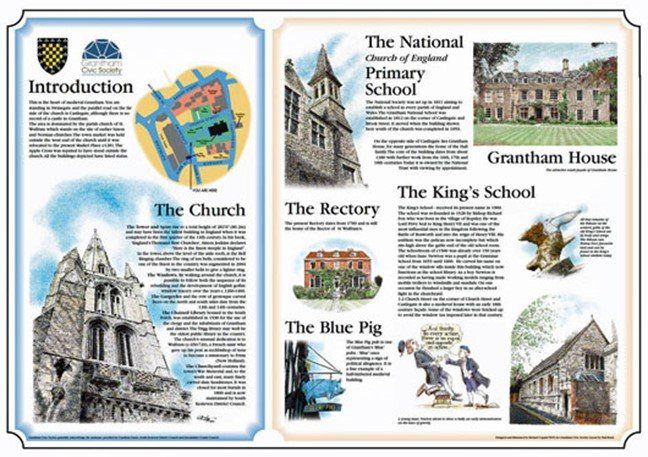
The second signboard looks towards St Wulfram’s church from Swinegate and shows all the historic buildings along with another cartoon which depicts Isaac Newton’s fight with Arthur Storer in the churchyard. Isaac was lodging with Arthur’s mother at the time. They both went to the Grammar school but long after, they became good friends and corresponded over the position in the night sky of Halley’s Comet. Arthur became America’s first astronomer and of course Isaac too became quite famous.
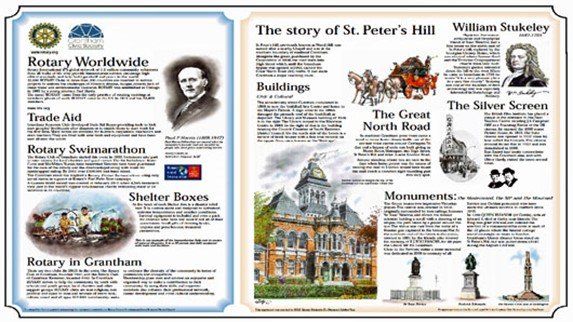
Signboard No 3 can be seen on St Peters Hill. It was suggested by Courtney Finn to mark his 2010-11 year as President of the Rotary Club of Grantham. The Club agreed and the signboard was designed. SKDC was happy with the idea but said it all needed planning permission and that cost £330. Grantham Future and Cllr Jacky Smith again came to the rescue with the money and the signboard was duly made and installed by SKDC.
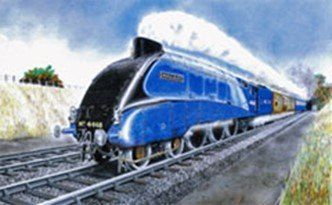
On 7th and 8th September 2013 Grantham held a Railway Festival of Speed when the 75th anniversary of Mallard’s world speed record was celebrated. The iconic engine had travelled to Grantham railway station from the national Railway Museum at York and was displayed with other engines and the Gresley tea coach on a specially created siding right next to the station. 15,000 visitors came and Grantham Civic Society was involved in the planning of the Festival and organised 50 volunteer stewards into 70 shifts to look after the visitors and the weekend.
